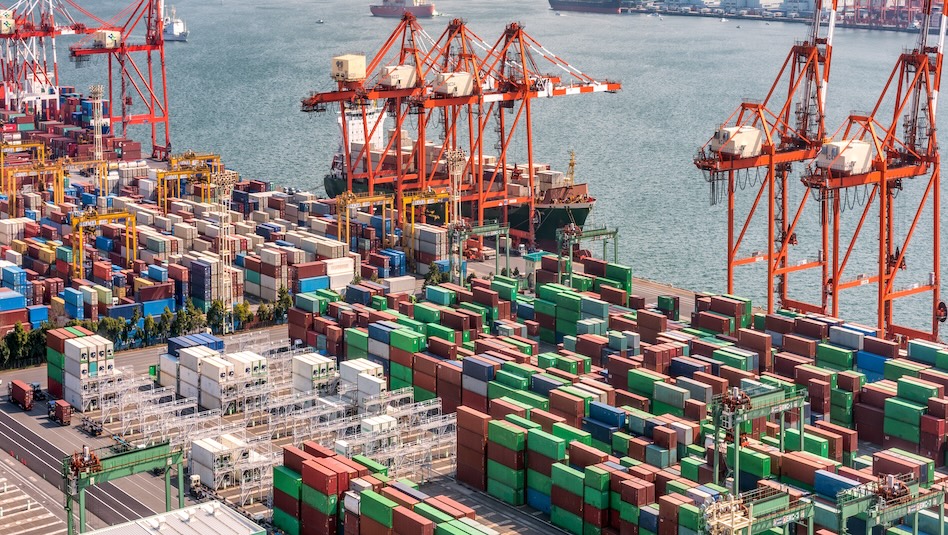




Monthly Economic Update: One for the road
 DOWNLOAD
DOWNLOAD

Inflation Update: Still low, still slow
 DOWNLOAD
DOWNLOAD

Philippines Trade Update: Exports momentum continues
 DOWNLOAD
DOWNLOAD


Factory activity expands in December

Philippine factory activity ended 2024 on a high as December growth was the fastest since November 2017, driven by an increase in production and new orders, S&P Global said on Thursday.
The S&P Global Philippines Manufacturing Purchasing Managers’ Index (PMI) rose to 54.3 in December from 53.8 in the previous month.
This matched the April 2022 print and was the strongest improvement in operating conditions since the 54.8 reading in November 2017.
 A PMI reading above the 50 mark denotes improvement in operating conditions, while a reading below 50 signals deterioration.
A PMI reading above the 50 mark denotes improvement in operating conditions, while a reading below 50 signals deterioration.
“The Filipino manufacturing sector ended 2024 on a positive note, with further improvements in demand resulting in sharp and significant increases in new orders and output,” Maryam Baluch, economist at S&P Global Market Intelligence, said in a report.
The Philippines’ PMI reading remained the fastest among six Association of Southeast Asian Nations (ASEAN) member countries in December. It was ahead of Thailand (51.4), Indonesia (51.2) and Myanmar (50.4).
A contraction in manufacturing activity was seen in Vietnam (49.8) and Malaysia (48.6).
In its report, S&P Global said output and new orders “positively influenced” the Philippines’ PMI reading in December.
“Sharp expansions in both new orders and output were reported, supported by anecdotal evidence of robust underlying demand trends, product diversification, and new client acquisitions,” it said.
International markets saw a resurgence in demand, leading to the first uptick in new export orders in five months, S&P Global said.
An increase in production requirements prompted manufacturers to hike purchasing activity, with input buying rising at the highest rate in nearly two years.
“A sustained increase led to a resumption of pre-production inventory building, following two consecutive months of contraction,” it said.
S&P Global said vendor performance deteriorated sharply in December, although at a slower pace than in November.
“The surge in purchasing activity strained supply chains, causing traffic and port congestion, according to panelists,” it said.
Manufacturers trimmed staffing levels in December, ending three straight months of hiring.
“While production efficiency allowed manufacturers to stay on top of tasks at hand, it also led to a slight drop in employment, thereby ending a three-month streak of job creation. However, this could be a temporary blip, especially if demand remains resilient as anticipated throughout 2025,” Ms. Baluch said.
S&P Global said rising costs for materials and suppliers were passed on to clients, although data showed easing inflationary pressures.
“December highlighted a moderation in inflationary pressures, marking a shift from the spike observed in November. In fact, cost burdens and output charges rose at historically muted rates,” Ms. Baluch said.
Manufacturers kept an optimistic outlook for 2025, although the level of confidence slid to a four-month low.
“Firms remained confident that output would rise over the coming year, amid hopes that demand trends will strengthen further and plans to launch new products,” S&P Global said.
Rizal Commercial Banking Corp. Chief Economist Michael L. Ricafort said factory activity improved in December due to the “peak in demand for many businesses/industries during the fourth-quarter Yuletide holiday season.”
“Faster manufacturing PMI data would be a bright spot for the Philippine economy that could fundamentally lead to faster GDP (gross domestic product) growth, as one of the leading economic indicators,” he said.
In an e-mail, Pantheon Macroeconomics Chief Emerging Asia Economist Miguel Chanco said the Philippines remained an outperformer in manufacturing in the region.
The Philippines’ PMI reading was above the ASEAN average of 50.7 in December. For 2024, the ASEAN PMI reading averaged 51.
He noted the manufacturing PMI for ASEAN was “weaker than we expected, though the headline dip was caused primarily by the bloc’s more developed members hitting a brick wall at the end of last year.”
Mr. Chanco said the ASEAN PMI data suggest factory activity should remain stable in the near term.
In a separate report, S&P Global said manufacturing firms in the ASEAN region were optimistic for the year ahead, although the degree of confidence dropped to the lowest in eight months.
“While the 2025 output outlook remains positive, it waned slightly. Growth in new orders remains mild and heavily dependent on domestic demand, while weak international demand continues to hinder growth,” Ms. Baluch said. – Aubrey Rose A. Inosante, Reporter
This article originally appeared on bworldonline.com





 By BusinessWorld
By BusinessWorld